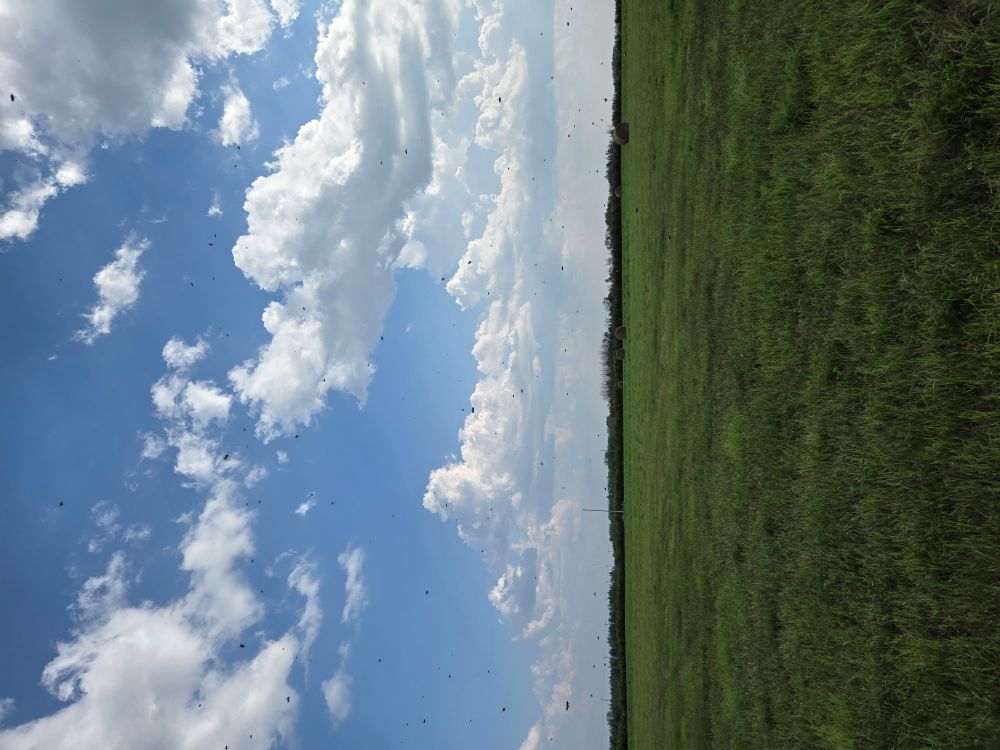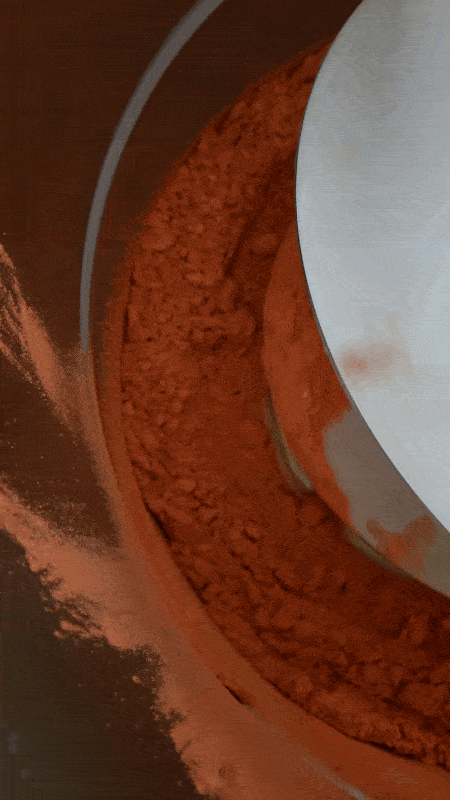· By Angela Seto
How to keep the honey flow going

The sky full of bees at one of our yards.
What's new on the farm:
It's been almost two weeks since harvest has been underway. The yields have been promising so far!
Some of our yards have hives that have filled up 5-6 honey supers already. That's at least 200 pounds (depending on how full the boxes are), and some more than that!
There are other yards with hives that aren't that productive, but they are still doing well.
The less productive hives are the ones that we made in early June when we did our "splits". They have had less time to grow so their populations aren't as strong. That means there are less bees to bring the nectar in compared to our older hives.
Despite this, they are doing very well so far. Our main concern is whether the nectar flow will continue for a few more weeks.
Luckily, we had been getting enough rain and moisture to keep the crops flowering. The main concern is that it has been much cooler here than a typical Saskatoon summer.
Most of the flowers here need specific temperatures so that they make the most amount of nectar. Take sweet clover flowers, for instance. An acre of sweet clover can produce up to 500 lbs of honey! However, the temperature needs to be at least 24°C (75°F) consistently for the flowers to produce that much nectar. Alfalfa, another favorite of ours, needs 25°C to get maximum nectar production. Every degree colder means a huge cut in production.
Normally, Saskatoon has HOT summers. We get weeks of temperatures over 30°C (86°F). It's insufferable to work and harvest in. But, we also love it because that's part of why we can get such big yields compared to other regions.
This whole summer it's been cold! It's been hovering between 20-25°C for most of July and August. And the forecast isn't offering much heat in the coming weeks. On top of that the smoke from wildfires also comes in and out, which cools things down as well. That means we may not be getting as much nectar as we usually would with the moisture that we've been receiving.
If it isn't drought, it's smoke. If it's not either, then it's not enough heat! Or too much rain, or too much heat, and so on! There are so many variables that we can't control, and it can drive you crazy. We've done all the preparation we can. Now we continue to harvest and monitor the hives, and hope the weather starts to heat up again.
One thing is for sure, is that when you farm, you can see exactly how the climate and environment affect what we eat. Not just the quantity, but the quality and taste too! And when people only buy all their food at the grocery store, it can be easy to become disconnected to how it all gets there in the first place. That's why it's so important for us to share what goes into the honey you eat!
In the Kitchen
Last week, I shared that we were waiting for replacement freeze-dried powder for our newest flavored honey. We finally received it, and we are packing our first batch into jars today! Thanks to everyone who submitted guesses on our newest honey flavor! Once we announce our new flavor, we will also draw a winner for our prize of 2 jars of the upcoming flavor. For now, enjoy this gif of the fruit powder being added into our creamed honey!

Grilled Peaches with Honey
It's peach season for us here! Peaches are our family's favorite fruit, so we buy flats and flats of peaches from the farmers' market to make the most of this delicious season. Grilling peaches on the barbecue is an easy way to make dessert without firing up your oven in the hot weather (even though we don't have that problem this year...). Try this with plain honey or even our Spicy Honey for an added twist and kick! Put it on vanilla ice cream and you'll be winning at life.
Check out the recipe at Easy Healthy Recipes.
